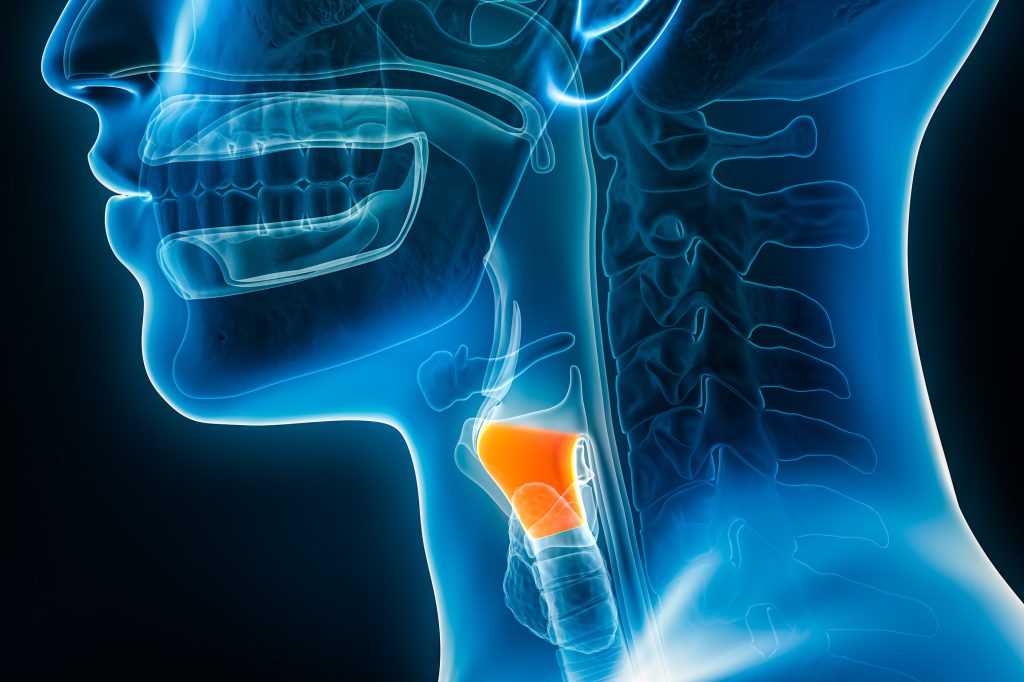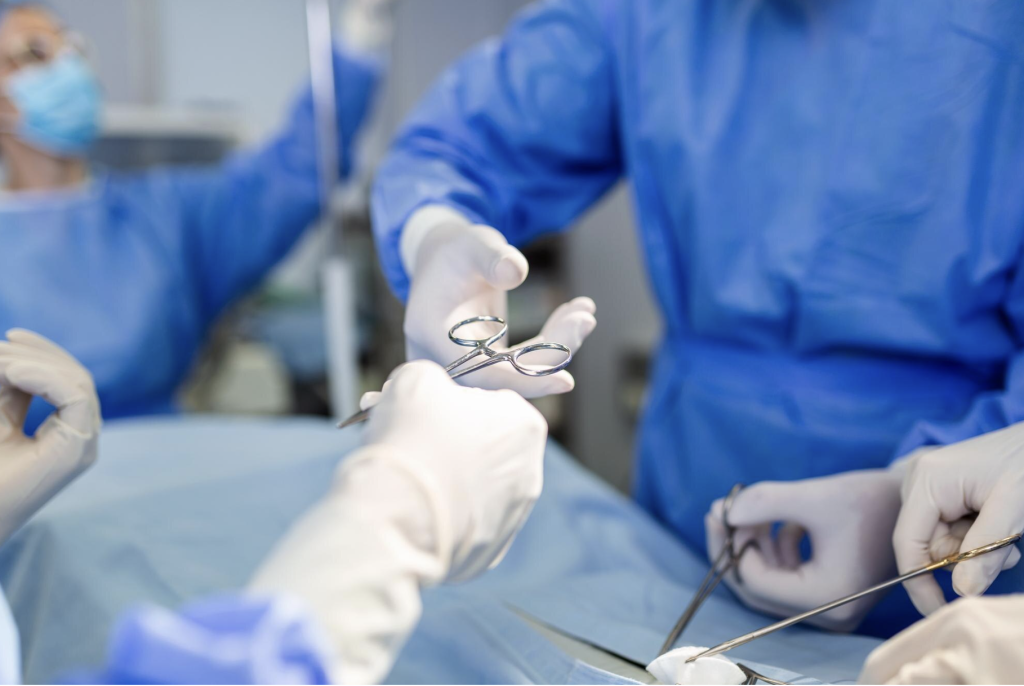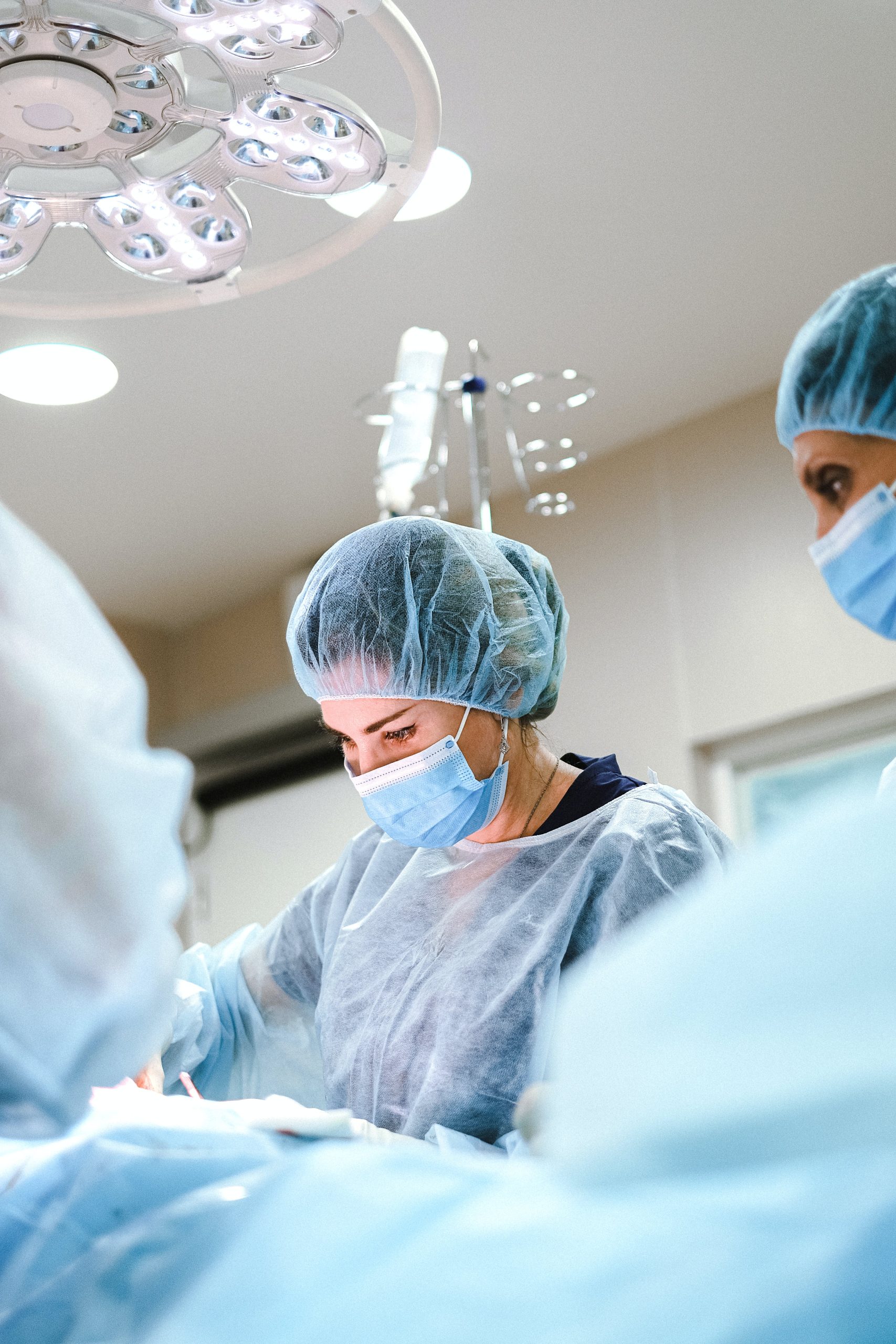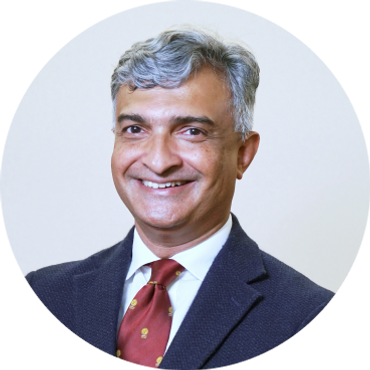Vocal Cord Surgery (Laryngeal Surgery): Risks, Recovery and More
What is Vocal Cord Surgery?
Vocal cord surgery is a procedure designed to improve the voice or alter its pitch. Also known as laryngeal surgery, this type of surgery becomes a consideration when vocal cords are damaged due to overuse, infection, or growths such as nodules (small, hard, callous-like growths) or polyps (soft, swollen, and often larger growths). In Singapore, about 2.5% of the population seeks medical advice for voice disorders each year. Read on to learn more about how vocal cord surgery could potentially affect your vocal health.
How the Voice Works

Your vocal cords or vocal folds lie within the larynx, also known as the voice box, which is situated atop your windpipe. When you speak, air from your lungs is pushed upward, causing these cords to vibrate. This vibration turns the air into sound. The pitch and tone of this sound are controlled by the tension and length of the vocal folds.
The health of your vocal cords significantly affects the quality of your voice. Proper hydration and avoiding strain help maintain vocal cord health. If your vocal folds are swollen or damaged, your voice might sound hoarse or become difficult to use. Book a consultation with Nuffield ENT to obtain your diagnosis.
Types of Vocal Cord Surgery
Vocal cord surgeries are diverse, each tailored to address specific issues with the voice or breathing. Here’s a clearer look at these procedures and what makes them unique:
1. Phonosurgery
Phonosurgery is surgery aimed at improving the sound of your voice, often by adjusting or repairing the vocal cords to enhance clarity and tone.
- Medialization Laryngoplasty: A surgery that moves parts of the voice box closer together using an implant, helping create a stronger voice, especially helpful for those whose voice box doesn’t close properly.
- Arytenoid Adduction (AA): A procedure where surgical threads adjust the position of cartilage in the voice box to improve voice quality by ensuring the vocal cords close properly, particularly useful when one side of the voice box is paralysed.
- Vocal Fold Injection: Beyond augmentation, this can deliver treatment directly to the vocal folds, aiding in conditions like scarring or inflammation.
- Other Procedures: Include cordotomy, fat grafting, and scar revision, each selected based on individual goals and conditions.
2. Laryngoplasty Treatments
Laryngoplasty modifies the larynx to improve voice and/or airway function.
- Injection Laryngoplasty: Substances injected into the vocal cords enhance their closure and shape, offering immediate voice improvement.
- General Laryngoplasty: Various techniques alter the larynx’s structure or soft tissues, aiming for significant voice and breathing enhancements.
3. Vocal Cord Laterilisation
This procedure aims to treat unilateral vocal cord paralysis by laterally repositioning one vocal cord. It enhances the airway for breathing while trying to maintain voice quality, serving as a reversible option for those needing improved airway patency but wanting to avoid permanent vocal alterations.
4. Vocal Cord Stripping
Vocal cord stripping is performed to remove superficial vocal cord lesions, such as nodules or polyps, without damaging deeper layers. It’s intended for patients whose lesions do not respond to conservative treatments, aiming to preserve the voice’s quality by keeping the underlying structures intact.
5. Laser Surgery
Laser surgery uses precise targeting to remove unwanted vocal cord tissue, improving voice quality and reducing hoarseness.
Among the techniques employed, the KTP laser and the carbon dioxide laser are notable. The KTP laser is often used for its precision in targeting and removing vascular lesions without significant damage to surrounding tissue. In contrast, the carbon dioxide laser provides excellent cutting capabilities, which is beneficial for larger lesions but may require more careful management to minimise collateral tissue damage. Exploring these specific applications and benefits of different types of lasers like the KTP and carbon dioxide lasers can provide further insight into their role in vocal cord surgeries.
6. Microflap Surgery
This involves delicate incisions to excise lesions while preserving surrounding vocal cord tissue, maintaining vocal quality.
7. Microlaryngoscopy
Offers a magnified view to precisely remove growths, improving voice quality.
8. Laryngeal Microsurgery
Utilises a microscope for detailed surgery, restoring voice and eliminating benign lesions.
9. Laryngeal Reinnervation
This surgery grafts healthy nerves to damaged ones, aiming for a gradual restoration of voice, breathing, and swallowing functions.
10. Tracheotomy
Tracheotomy is a surgical procedure that creates an opening in the neck into the trachea to secure an airway for breathing when the upper airway is blocked or needs bypassing for ventilation. It can be temporary or permanent, depending on the patient’s condition.
11. Cordectomy
Involves the removal of part or all of a vocal cord, primarily for cancer treatment, with a focus on minimising voice quality impact.
12. Laryngectomy
This is a more radical procedure removing the larynx, leading to voice loss and breathing through a stoma but potentially preserving swallowing function.
Each type of surgery offers unique benefits tailored to specific conditions, ensuring that patients have multiple options for voice restoration and improvement.
13. Voice Feminisation Surgery
Voice feminization surgery involves surgical techniques to raise the pitch and modify resonance of the voice, making it sound more typically feminine. It’s often sought by transgender women and gender-diverse individuals to align their voice with their gender identity.
Vocal Cord Surgery Procedure
Lorem ipsum dolor sit amet, consectetur adipiscing elit. Ut elit tellus, luctus nec ullamcorper mattis, pulvinar dapibus leo.
Before Surgery
Recognising Symptoms and Seeking Help
The journey begins when voice changes or throat discomfort prompt a consultation with a specialist. Recognizing these early signs is crucial for timely intervention.
Consultation and Comprehensive Evaluation
Patient History and Symptom Review: The first step is a detailed discussion about your voice use, symptom onset, and any related health issues.
Physical Examination: A thorough examination of your neck, throat, and larynx is conducted to identify any visible abnormalities.
Advanced Diagnostic Procedures
- Laryngoscopy: A procedure where a small camera is used to look at your voice box to check for any problems.
- Stroboscopy: A special camera test that shows how your vocal cords move, using light to capture their vibration in slow motion.
- Voice Analysis and Imaging Studies: Tests that measure voice quality and imaging studies like X-rays or MRIs help in visualising the laryngeal structures.
- Pulmonary Function Tests and Acoustic Analysis: Evaluating lung capacity and using software to analyse the sound waves of the voice can reveal important details about your condition.
- Electromyography (EMG) of the Larynx: A test that checks if the muscles in your voice box are working properly by measuring their electrical activity.
- Biopsy: If suspicious lesions are present, a biopsy can confirm or rule out malignancies, aiding in accurate diagnosis and treatment planning.
Based on the comprehensive diagnostic results, if surgery is considered the best course of action, here’s what you can expect:

During Surgery
Under anaesthesia, techniques such as medialization laryngoplasty or LEMG tailored to your condition are performed, with a laryngoscope providing a clear view of the vocal cords.

Post-Surgery Care
Do’s After Voice Surgery
- Voice Rest: Strictly limit talking for the first week, or as your healthcare provider advises.
- Diet: Stay hydrated and opt for soft foods if you find swallowing difficult.
- Rest: Ensure you get plenty of sleep and engage in stress-free activities to aid your recovery.
- Activities: Keep physical exertion to a minimum to avoid straining your voice and body.
Don’ts After Voice Surgery
- Lifestyle: Refrain from smoking and consuming alcohol, as they can significantly hinder your recovery process.
- Activities: Avoid lifting heavy objects and engaging in strenuous exercise that could strain your voice or overall recovery.
For a smooth recovery, it’s important to adhere to these guidelines and consult your doctor regarding any specific concerns or questions you may have.


Benefits of Vocal Cord Surgery
Vocal cord surgery offers numerous benefits that can enhance your voice’s quality and your overall ability to communicate:
- Improved Clarity: Surgery can resolve conditions like nodules or polyps, leading to clearer speech.
- Increased Volume: Post-surgery, you may notice enhanced voice projection, facilitating better conversation and public speaking abilities.
- Restored Pitch: The procedure can help correct vibrational issues of the vocal cords, normalising pitch.
- Greater Endurance: Your voice may tire less easily after surgery, supporting longer speaking engagements without strain.
- Less Pain: Surgery often reduces vocal pain associated with strain, providing comfort during speech.
Voice therapy after surgery is vital for optimal recovery. It involves structured exercises and techniques to enhance vocal function, combining surgical improvements with rehabilitative care to ensure the best vocal health outcomes. This collaborative approach helps patients regain or improve their voice quality.
Types of Vocal Cord Abnormalities
The table below provides an overview of common vocal cord abnormalities, detailing their characteristics and the corresponding surgical interventions.
| Abnormality | Description | Recommended Surgeries |
| Cysts | Fluid-filled sacs that develop on the vocal cords, often causing voice changes and discomfort. Surgery may be required for removal. | Microflap Surgery Laser Surgery |
| Polyps | Soft, swollen, and often larger growths on the vocal cords, which can cause hoarseness or breathiness in the voice. | Microflap Surgery Laser Surgery |
| Nodules | Small, hard, callous-like growths on the vocal cords, usually resulting from vocal strain or overuse, leading to a raspy voice. | Phonosurgery Microflap Surgery |
| Vocal Cord Paralysis | A condition where one or both vocal cords cannot move, affecting voice, breathing, and swallowing. It may require surgical intervention to improve function. | Medialization Laryngoplasty Arytenoid Adduction |
| Papillomas | Benign, wart-like growths caused by the HPV virus, which can affect voice quality and breathing. Treatment often involves surgery to remove the growths. | Laser Surgery Microlaryngoscopy Laryngeal Microsurgery |
| Laryngeal Cancer* | A malignant growth that can occur on the vocal cords or other parts of the larynx, potentially impacting voice, breathing, and swallowing. | Cordectomy Laryngectomy Phonosurgery |
| Laryngitis | Inflammation of the vocal cords, typically caused by infection, irritation, or overuse, leading to voice loss or hoarseness. | Not typically surgically treated, managed medically |
*Note that for laryngeal cancer, the type of surgery recommended would significantly depend on the stage and extent of the cancer, as well as the patient’s overall health. Surgical options could range from minimally invasive techniques to more radical surgeries, often in combination with other treatments like radiation and chemotherapy.
Symptoms of Vocal Cord Damage
Experiencing changes in your voice can indicate damage to your vocal cords. Key symptoms include:
Your voice may become breathy, strained, or vary in volume and pitch.
A cough that doesn’t go away could point to vocal cord issues.
Noticeable alterations in pitch or volume are common signs.
Should voice problems persist beyond two weeks, without recent cold or flu symptoms, it might suggest vocal cord paralysis or another serious condition. Other symptoms to watch for are:
Struggling to speak as usual.
The feeling of needing to clear your throat often.
A reduced ability to hit high or low notes.
If you notice these symptoms, consulting a healthcare professional promptly is crucial. Early detection and treatment can help prevent further damage and safeguard your vocal health. Contact Nuffield for an appointment today.
Causes of Vocal Cord Damage
Vocal cord damage arises from multiple factors:
- Prolonged Vocal Strain: Often seen in professional singers or teachers, leading to nodules or polyps.
- Infections: Larynx infections can inflame and damage vocal cords.
- Vocal Cord Paralysis and Trauma: Less frequent but can result from nerve function impairment or physical injury.
- Intubation: Necessary for respiratory support, yet may cause damage when applied for extended periods.
- Lifestyle Choices: Smoking notably accelerates vocal cord deterioration.
- Occupational Hazards: Exposure to chemicals or excessive vocal use can harm vocal health.
- Illnesses: Conditions ranging from benign to serious, like cancer, impact vocal cords.
Early medical consultation for any vocal cord damage symptoms is key to effective treatment and prevention of further harm.
Am I a Suitable Candidate for Vocal Cord Surgery?
Before proceeding, assess your symptoms carefully. Persistent hoarseness or vocal strain might signal the need for an assessment.
However, not all voice issues necessitate surgical intervention.
Key considerations include:
- Duration of symptoms: Have they lasted over two weeks despite rest?
- Severity: Is your condition affecting daily communication?
- Underlying Causes: What specific condition (nodules, polyps, cysts, paralysis) is causing your vocal issues?
- Non-Surgical Treatment Outcomes: Have non-surgical approaches (voice therapy, medications, lifestyle adjustments) failed to improve your condition?
- Voice Demand: Does your profession or daily life require extensive voice use?
- General Health and Surgery Risks: Are you in suitable health for surgery, and have you discussed potential surgical and anaesthesia risks?
- Expectations and Goals: What realistic outcomes do you anticipate from surgery regarding voice quality and function?
- Post-Surgical Commitment: Are you prepared for the post-operative rehabilitation process, including voice rest and extensive therapy?
An appointment with an ENT specialist is crucial. During your consultation, expect a thorough evaluation to determine if surgery is the best course of action.
Vocal Cord Risks
Undergoing vocal cord surgery presents certain risks that are important to consider before proceeding with the operation. These risks include:
- Infection: The surgical site is susceptible to infections, which might necessitate the use of antibiotics or further medical intervention to resolve.
- Voice Changes: Patients may experience changes in their voice, including alterations in pitch, tone, or volume. While these changes are often temporary, there is a rare chance they could become permanent, potentially requiring voice therapy to manage.
- Bleeding: During or after the surgery, there’s a possibility of experiencing minor to moderate bleeding. This situation is generally manageable with minimal medical intervention.
- Anaesthetic Reactions: Although uncommon, there’s a risk of adverse reactions to anaesthesia. A thorough preoperative evaluation is essential to minimise these risks and ensure patient safety.
Vocal Cord Complications
Complications arising from vocal cord surgery, while not always common, can have significant implications for the patient’s recovery and overall vocal quality. These complications include:
- Scarring: The formation of scar tissue on the vocal cords can negatively affect vocal quality. This impact may be temporary in some cases, but there’s also a less common risk of long-term changes to the voice.
- Airway Obstruction: In rare instances, swelling after surgery can obstruct the airway. This serious complication requires immediate medical attention to ensure the patient’s safety and wellbeing.
Complementary Procedures
To complement your rehabilitation, the healthcare team may suggest additional procedures and interventions:
- Voice Therapy: Attend sessions to learn and practise proper vocal techniques.
- Thyroplasty: This offers pitch correction and tension reduction, adapting to the patient’s vocal requirements.
- Adenoidectomy: May be recommended if adenoids are impacting vocal health.
- Uvulopalatopharyngoplasty (UPPP): Addresses obstructive sleep apnea, potentially affecting voice quality.
Your doctor will evaluate the need for these complementary procedures based on your individual condition, aiming for a holistic approach to your recovery and rehabilitation.
Vocal Cord Surgery Costs in Singapore
When considering vocal cord surgery in Singapore, you should be aware of the factors that influence the price, such as the complexity of the procedure, the surgeon’s expertise, and the facility used.
Average Costs:
- Simple procedures (e.g., vocal cord nodules): SGD 5,000 – 10,000
- Complex surgeries (e.g., vocal fold paralysis): SGD 10,000 – 20,000
These costs may be exclusive of pre-operative assessments and post-operative care. Always confirm with your healthcare provider for the most accurate estimates.

Are There Subsidies for Vocal Surgery in Singapore?
These schemes can help offset the cost of vocal cord surgery in Singapore:
MediShield Life
Basic health insurance that covers large hospital bills and selected outpatient treatments.
MediFund
Government endowment fund for patients facing financial difficulties after exhausting other means of payment.
Day Surgery Subsidies:
Ministry of Health subsidies for day surgeries at Public Healthcare Institutions.
Eligibility depends on income, residency status, and medical necessity. Apply through your clinic or hospital’s medical social services department.
Additionally, your insurance may cover part of the cost. Check with your insurance provider to understand the specifics of your coverage.
The Team at Nuffield ENT
Dr. Vyas Prasad
Dr. Vyas Prasad, a key member of the Nuffield ENT team, boasts an impressive track record in managing voice and swallowing disorders, with a focus on minimally invasive techniques.
- Developed and led the voice and swallowing disorders service at Ng Teng Fong General Hospital, Singapore.
- Specialised in minimally invasive surgery for voice and swallowing disorders, including the use of lasers and sialendoscopy.
- Underwent specialised training in head and neck surgery and laryngology in Belgium, focusing on robotics, lasers, and phonosurgery.
- Manages professional voice users, including singers and public speakers, and performs transgender voice surgery, including pitch altering procedures.

Vocal Cord Surgery Before and After Photos

To view the before and after photos of our patients, we invite you to drop by our clinic at Wheelock Place or make an appointment by calling +65 6950 2869.
FAQ
1. Is Vocal Cord Surgery Dangerous?
Vocal cord surgery, like any procedure, carries risks including infection, voice changes, and scarring, but with experienced surgeons and proper care, it’s generally considered safe.
2. Will My Voice Change After Vocal Cord Surgery?
Your voice may change after vocal cord surgery due to alterations in the vocal cords’ structure and function, affecting pitch, tone, and volume.
3. Can Vocal Cords Grow Back?
No, vocal cords cannot regrow if completely removed. Some surgeries can restore function, but scarring treatments focus on improving function.
4. Is Vocal Cord Surgery Permanent?
Vocal cord surgeries like laryngectomy offer permanent changes, as they involve removal of the larynx, while procedures like injection laryngoplasty, which enhances vocal cord closure, may be temporary and require repeat treatments as the injected materials are absorbed over time.
5. Can You Get Vocal Cord Surgery to Sing Better?
Yes, vocal cord surgery can improve singing by correcting physical issues like nodules or polyps that impair voice quality. However, it’s not typically used to enhance a healthy voice’s ability but rather to restore or repair existing vocal problems. Professional training is the primary method for enhancing singing abilities.
6. What Are the Psychological Effects of Undergoing Vocal Cord Surgery?
Psychological effects include anxiety about voice changes, fear of surgery outcomes, and potential impact on identity or career, necessitating emotional support and counselling. Be sure to highlight any concerns you have to your doctor.
7. What Precautions Should Be Taken When Travelling Post-Surgery?
Post-surgery, travellers should stay hydrated, avoid speaking loudly over noise, and consult their doctor about air travel timing to manage air pressure effects.
8. How Does Vocal Cord Surgery Differ for Professional Singers and Actors?
For singers and actors, surgeries are meticulously planned to preserve or enhance voice quality, focusing on minimal impact to vocal range and performance ability.
Medical References
Czesak, M., et al. (2020). Methods of surgical treatment of bilateral vocal fold paralysis. Endokrynologia Polska, 71(4), 350–358. https://doi.org/10.5603/ep.a2020.0042
Nawka, T., et al. (2005). Surgical procedures for voice restoration. GMS Current Topics in Otorhinolaryngology, Head and Neck Surgery, 4, Doc14.
Şahin, A. et al. (2023). Laryngeal Framework Surgical Anatomy: A Radiological study. Journal of Voice, 37(5), 801.e9-801.e15. https://doi.org/10.1016/j.jvoice.2021.04.013
